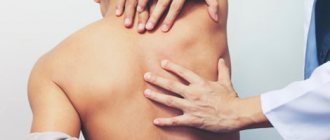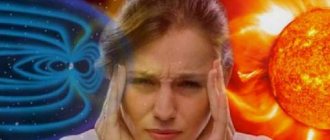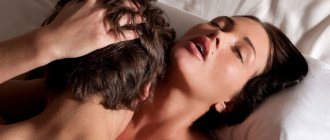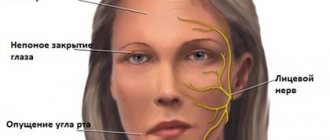Many people are familiar with the sharp pain that hits the left temple. This trouble can be a manifestation of a large number of different diseases, since a significant number of muscles, veins, nerve endings and receptors are located in the temporal region.
It happens that throbbing pain is the only symptom that worries a person. But sometimes other ailments are added to this problem. In any case, such symptoms cannot be ignored, since they may be signs of serious disorders in the body.
Mechanism of occurrence
Painful sensations occur due to irritation of the nerve trunks. First, a pathological impulse is formed in the nerve fibers, as a rule, this occurs due to some provoking factor, mechanical damage or inflammatory process affecting nerve processes or muscle tissue.
As a result, the pathological process affects the structure of neurons, and the nerve fibers cease to perform the function of “inhibition”.
As a result, a short-term pain impulse is formed that spreads throughout the entire nerve trunk. This is how a sharp pain arises, which is often accompanied by pulsation.
It is important to realize that pain in the temporal region of the head is not an independent disease, it is a concomitant symptom indicating some kind of disorder in the body.
Why it shoots in the left temple: 18 common reasons
If the left temple hurts and throbs, this may be a concomitant sign of a number of disorders. As a rule, trouble occurs under the following conditions:
- Physical and emotional fatigue . People who are stressed and lead an unhealthy lifestyle often experience headaches, and their face may go numb during an attack. As a rule, the painful condition lasts for 1–2 hours, after which improvement occurs.
. A situation where a headache and shooting in the left temple often occurs in adolescents and young women, especially during pregnancy. Often the malaise is accompanied by visual disturbances, and “spots” flash before the eyes, and some patients experience nausea, vomiting and an increased heart rate.
Migraine- Premenstrual syndrome . During these periods, neuroendocrine changes occur in a woman’s body, one of the manifestations of which is pain in a certain part of the head.
- Disruptions in the production of hormones . This process can manifest itself as sharp pain in the back of the head, temples or frontal area. Often such attacks occur in women during menopause, accompanied by hot flashes and mood swings.
- Inflammatory processes and infectious diseases . With influenza and ARVI, severe pain in the head often occurs, disappearing after recovery. These same symptoms are characteristic of colds, when the patient could simply be exposed to a draft. In such cases, pain may appear not only in the temples, but also in the neck or ear.
- Poisoning . During intoxication, in addition to nausea and vomiting, an unpleasant sensation often occurs when the right or left temple throbs and severely hurts. The same symptoms are characteristic of a hangover.
- Atherosclerotic plaques in the vessels of the brain . Such “deposits” are often the cause of pain that knocks in the left temple , and can periodically intensify and then subside. Such conditions are accompanied by disorders of hearing, vision, memory and coordination of movements.
- High or low blood pressure . These conditions may be accompanied by loss of consciousness, weakness, arrhythmia and pulsation in the right or left side of the head.
- Diseases of the adrenal glands . This condition is characterized by increased activity of adrenaline synthesis, resulting in vascular spasms and blood pressure “jumping up.” This provokes the disease.
- Vegetovascular dystonia . This disorder can be accompanied by unpleasant manifestations from all organs and systems of the body, including headaches.
- Osteochondrosis of the cervical spine . Due to this disorder, the diameter of the vertebral artery decreases, which can cause discomfort when the head hurts and the left temple twitches.
- Diseases and injuries of the facial joints . With such a disorder, pain appears in the corresponding part of the head, as well as in the cheekbones. Sometimes when the jaw moves, clicks occur and a crunching sound is heard in the joints.
- Damage to cranial nerves . This condition is caused by compression of the processes, which provokes sensations reminiscent of an electric shock.
- Chronic inflammation of the temporal arteries (arteritis) . This disease affects older people: both women and men. The condition is manifested by pain in the temple area, which is often pulsating in nature. In some cases, there is redness in this part of the face.
- Infectious and inflammatory diseases of the oral cavity . Many patients note that when a tooth hurts, the unpleasant sensation spreads throughout the entire head, including the temporal region. The same thing happens with painful processes in the mucous membrane, for example, stomatitis.
- Inflammation of the meninges . These conditions are characterized not only by headache and fever, but also by symptoms accompanying poisoning.
- "Hungry" pains . People who eat irregularly or practice strict diets are prone to frequent ailments in the form of headaches. This is a consequence of a lack of certain microelements in the body.
- Food headaches. This is the opposite situation, when the disease occurs in people who abuse certain foods, for example, fast food, chocolate, Chinese processed foods, cheeses, and others.
Pain in the temple area
Arthritis
6731 28 October
IMPORTANT!
The information in this section cannot be used for self-diagnosis and self-treatment.
In case of pain or other exacerbation of the disease, diagnostic tests should be prescribed only by the attending physician. To make a diagnosis and properly prescribe treatment, you should contact your doctor. Pain in the temple area: causes of occurrence, what diseases it occurs with, diagnosis and treatment methods.
Definition _
Pain in the temple area is one of the most common complaints that brings patients to the doctor.
In the bone structures of the skull and brain tissues, pain sensitivity is insignificant, so the main sources of pain are blood vessels, meninges and cranial nerves.
Types of pain in the temple area
According to the International Classification of Headaches 3 (2013), all headaches are divided into:
- for primary pain not associated with diseases of the brain and other structures of the head and neck;
- secondary pain associated with other diseases;
- painful cranial neuropathies, other facial and headaches.
Possible causes of pain in the temple area
Arterial hypertension
is one of the common causes of headaches in the back of the head and temples. When pressure increases, attacks of headaches occur, which may be accompanied by nausea, vomiting, and “spots” before the eyes.
Tension headache
– one of the common reasons for visiting a neurologist and therapist. Patients characterize it as squeezing, pressing.
Tension headaches interfere with quality of life and performance, despite the fact that they are considered benign and do not carry serious consequences.
Migraine
is the most common form of attack-like headache.
Migraine is characterized by localization of pain in the temporo-frontal-orbital region and a paroxysmal nature of the course.
If the pain is not paroxysmal, then it is not a migraine. Seizures can occur on one side of the head or on both sides, and can also change their location (right-left).
A headache attack can occur at any time of the day, more often during a night's sleep in the morning or after waking up. The pain is pulsating, bursting, with a gradual increase in intensity over several hours. Before the onset of an attack, a so-called aura is possible (harbingers of pain, they vary from person to person, but are often described as disturbances in vision, speech, or dizziness). The pain intensifies in bright light, from loud sounds and other irritants, including changes in head position. The attack can last up to several days.
Harris' periodic migraine neuralgia
- characterized by the sudden onset of pain in the eye area on one side and spreading to the temporal, frontal and zygomatic areas, and sometimes even to the neck.
Unlike migraines, there are no warning signs of pain.
The pain is burning, cutting, bursting, accompanied by redness of the eye and lacrimation on the painful side. Some patients experience a sensation of the eye “bulging out of its socket.” All these attacks are characterized by a certain seasonality or periodicity. The duration of the attack ranges from 6–8 weeks to 3 months.
Pain in the temple area may occur immediately after drinking cold water
or ice cream due to arterial spasm. In this case, the pain is aching, squeezing, sometimes throbbing.
Cold pain occurs in individuals with increased sensitivity to cold stimuli and high reactivity of the body.
“Sausage” headache
(in English-speaking authors -
hot dogs headache
) occurs when eating foods containing food additives such as sodium nitrate. During a chemical reaction in the body, nitrate is converted into nitrite, which has a vasomotor effect (controlling the process of contraction and relaxation of the muscular lining of the walls of blood vessels, and, consequently, the lumen of blood vessels), and sensitive people may feel pain in the frontotemporal region.
A similar effect sometimes occurs when eating Chinese dishes (“Chinese restaurant headache”), where monosodium glutamate is often used.
Giant cell arteritis
is the most common systemic vasculitis in the world, affecting large vessels. The favorite localization of this disease is the temporal artery. Most often, the pain is intense, accompanied by limited function of the corresponding temporomandibular joint, blurred vision with its gradual decrease, and a hardened artery in the temple area is detected.
Without treatment, it can lead to permanent blindness of the eye on the affected side.
With inflammatory diseases of the ear,
pain in the temporal and parotid region is possible, which is accompanied by fever, redness, swelling in the ear area, and purulent discharge from the ear.
Meningitis
develops when an infectious agent enters the membranes of the brain, followed by an inflammatory process.
The headache is sudden, sharp, diffuse, predominant in the frontotemporal areas, sometimes accompanied by vomiting.
Neuralgia of the auriculotemporal nerve
often occurs after an inflammatory process or traumatic lesion of the parotid gland. It is characterized by burning, throbbing pain in the area of the external auditory canal, temple, temporomandibular joint, radiating to the lower jaw. The pain is accompanied by increased salivation and redness of the skin over the affected area. Attacks are triggered by eating and smoking.
Neuralgia of the ear ganglion
manifests itself as attacks of burning pain in the temporal region lasting from several minutes to an hour. May be accompanied by ear congestion and increased salivation.
For altitude sickness
There is a change in arterial tone due to reduced oxygen pressure and changes in barometric pressure. Headache is accompanied by shortness of breath, palpitations, and blurred vision.
The severity of symptoms depends on the speed of ascent to altitude.
The pain is relieved by applying cold to the temples and drinking cool water.
Traumatic lesion of the temporal region
may be the cause of pain. This includes a wide group of pathologies: fracture of the temporal bone, dislocation of the temporomandibular joint, soft tissue contusion.
Subarachnoid hemorrhage
occurs for various reasons, for example, as a result of a rupture of a cerebral aneurysm, a person feels like a strong blow to the head, hot liquid pouring into the head, strong contraction, and then bursting. The pain may initially be localized in the corresponding part of the head - in the temporal region when an aneurysm of the internal carotid artery ruptures.
Damage to the temporomandibular joint
(both inflammatory - arthritis, and non-inflammatory - arthrosis, malocclusion) may be accompanied by pain in the parotid and temporal region. When moving the lower jaw, crunching and clicking may occur in the joint; the pain intensifies when chewing and during conversation.
Which doctors should I contact if I have pain in my temples?
If you experience intense and recurring pain in your temples, you should consult a specialist.
If pain persists after taking painkillers or other symptomatic treatment previously prescribed by your doctor (for example, to lower blood pressure), and there are no signs of injury, you should contact or. Depending on the accompanying symptoms, you may need to consult a neurologist, rheumatologist, otolaryngologist, or ophthalmologist. In case of previous injury, it is necessary to contact a traumatologist or to exclude severe injury.
Diagnostics and examinations for pain in the temples
The list of examinations is prescribed by the doctor depending on the indications. An approximate list of studies that may be prescribed:
- computed tomography of the head;
In what cases should you not postpone a visit to the doctor?
The patient requires urgent medical attention if headaches are accompanied by the following symptoms:
- vomiting and nausea;
- visual impairment;
- loss of consciousness;
- difficulties in pronouncing words and recognizing someone else's speech;
- increased body temperature;
- numbness or weakness on one side of the body;
- tension in the neck muscles.
Symptoms such as these may be signs of serious illnesses such as meningitis, encephalitis, or stroke. In this case, you cannot delay contacting a doctor, and you should immediately call an ambulance.
Diagnostics
Since there are many reasons that provoke a headache in the left temple, a comprehensive examination is required to identify them. As part of diagnostic measures, the following are prescribed:
- general and biochemical blood test;
- electroencephalography of blood vessels in the brain and cervical region;
- Magnetic resonance imaging;
- lipid profile;
- consultation of specialized specialists (ophthalmologist, neurosurgeon, psychiatrist, neurologist and others).
After a diagnostic study, the doctor prescribes appropriate treatment.
Causes
There are 11 causes of headaches in the left temple.
Migraine
The leading place among the sources of pain in the left temple is migraine. It is usually localized in the same place and intensifies with movement and power loads.
A headache can be either a harmless short-term symptom of overwork or the first sign of serious illness.
Pain can be caused by migraine, cluster pain, osteochondrosis, hormonal imbalances, vascular disorders, infections, spinal pathology, allergies, weather sensitivity, pathology of the temporomandibular joint, neoplasms and brain injuries. To find out exactly, a full examination is carried out.
To date, scientists cannot determine the factors that cause migraine. Some experts believe that migraines can develop in people experiencing constant stress, puberty, hormonal changes, intense mental activity, and fatigue.
Headache in the temporal region can be localized with temporal arteritis.
A characteristic sign is a decrease in pulsation, thickening and pain on palpation of the temporal artery. A dangerous complication of this pathology is ischemic optic neuropathy and stroke.
Neurologist
Pershina Natalia Sergeevna
8 years of experience
Cluster headache
If your left temple hurts, this could be a sign of a cluster headache. It is similar to a migraine, but, unlike the first, it is localized only in a certain place, concentrated in one point.
Cluster headaches are common among thick-set, athletic men who smoke and who abuse alcohol. The best option to get rid of it is to give up bad habits and follow the doctor’s instructions, but not every adult is ready to do this.
The main signs of this syndrome are:
- flashes in the eyes;
- localization in the area of the superciliary arch or left temple;
- syndrome ;
- increased sweating, nasal congestion and nausea.
Pain in the left temporal part of the head, which can be caused by overwork, stress, as well as pathology of the hypothalamus, can be eliminated either independently or by contacting specialists. Meditation and walking outdoors can also help.
Pain of nervous tension
When a stressful situation occurs, a signal is sent from the receptors to the spinal cord and brain. The brain, in turn, processes the sent impulses and interprets them, as a result of which the head often hurts on the left side of the temple. The impulse is transmitted at an unusually high frequency, so the perception of pain symptoms is also accelerated.
Painful sensations of nervous tension can be accompanied by compression of the head, pulsation localized in one place, concentration in several directions and a feeling of fullness.
To eliminate symptoms that arise due to nervous tension, it is necessary to use medications selected by doctors. As a rule, in such cases, complex therapy is used, including antidepressants.
Osteochondrosis
With osteochondrosis, a common patient complaint is headache. For example, if the left temple of the head hurts, the reason for this may lie precisely in provoking a disturbance in the blood supply to the central nervous system due to osteochondrosis.
Painful symptoms in osteochondrosis can be caused not only by impaired blood flow, but also by pinched nerve fibers that are located near the vertebrae. This type of syndrome cannot be controlled with painkillers.
Why can our articles be trusted?
We make health information clear, accessible and relevant.
- All articles are checked by practicing doctors.
- We take scientific literature and the latest research as a basis.
- We publish detailed articles that answer all questions.
Headaches due to osteochondrosis should not be confused with migraines, since with the first option the syndrome can worsen when turning the head.
In addition, the symptom may be permanent or last for a long time (10-12 hours). Coordination in space is also impaired, hearing deteriorates and dizziness occurs.
It is worth noting that to relieve pain from osteochondrosis, the main source should first be removed. To eliminate it, surgical intervention may sometimes be required.
Problems or damage in the temporomandibular joint area
Problems or damage to the temporomandibular joint can cause pain. This joint is located in front of the ear and consists of the lower jaw and the temporal bone. Provided that the muscles and tendons of the joint are healthy, a person does not experience any discomfort when opening his mouth.
According to experts, temporomandibular joint problems are observed in 40% of people, but not all of them seek qualified medical help.
The sources of the problem may be:
- bad habits;
- injury ;
- stress;
- power loads;
- infectious diseases;
- endocrine disorders, etc.
The problem in this case is relieved by the use of medications, but may reappear if the main source is not eliminated.
Vascular problems
Vascular headache can be diagnosed not only in older people, but also in adolescents. Dystonia of arteries and veins, considered a sign of disruption of the circulatory system, is often the culprit of attacks of vascular pain.
How to get rid of headaches without pills
Headache is a common symptom that occurs for a variety of reasons.
The main symptom of VSD is considered to be a decrease in the tone of blood vessels and arteries. The source of pain in vegetative-vascular dystonia is a strong pressure of blood that is supplied to the human brain. Because of this, in order to get rid of the unpleasant syndrome, it is necessary to normalize the pressure and restore stable indicators.
It is worth noting that for VSD, preference should be given to non-drug treatment methods: physiotherapy, reflexology, exercise therapy, massage, relaxation and biofeedback.
Hormonal fluctuations
Men suffer from unpleasant sensations in the head area less often than women. Most cases are associated with hormonal changes during the menstrual cycle. Experts note that there is a definite connection between pain in the head and hormones.
Throughout the entire cycle, the amount of progesterone and estrogen in a woman’s body changes. 5-7 days before the start of the menstrual cycle, the number of hormones drops sharply, which can cause headaches. According to medical research, this process is caused by the influence of hormonal levels on blood vessels. Pain in the first days of menstruation is considered normal.
It is worth noting that in some cases, the cause of pain in the left temple may be the use of contraceptive medications that increase the level of estrogen in the blood. Headaches practically do not bother women during pregnancy or menopause, since during this period of time the hormone fluctuations are very insignificant.
Spinal column disorders
Disorders of the spinal column, as a rule, represent a displacement of the spine, causing pain and disorders of internal organs. When the vertebrae are displaced, the patient may feel a headache in the temple area on the left.
The first manifestations of vertebral displacement may not be detected immediately, which complicates diagnosis. The location of the pinching may influence the symptoms of this pathology. The most common symptoms of displacement are migraines, sleep disturbances, pain in the temples, and runny nose.
Headache occurs due to impaired blood supply to the brain or pinched nerves. When such pathologies are detected, drug treatment is mandatory; it is impossible to cope with the disease on your own.
Meteosensitivity
Sudden changes in atmospheric pressure significantly affect the level of oxygen in the blood, resulting in blood vessels narrowing or dilating, which often causes pain. Before precipitation, atmospheric pressure decreases, causing unpleasant sensations.
In addition, people are most susceptible to headaches in the autumn and winter seasons. At these times of the year, the body is depleted due to insufficient levels of ultraviolet rays, cloudy weather and increased precipitation.
A disorder in the balance of serotonin and neurotransmitters is caused by temperature changes, which negatively affects the centers of the brain. Weather sensitivity increases with age. This is due to the deterioration of the body’s protective abilities, as well as the occurrence of chronic diseases.
Infections
A common symptom accompanying infectious diseases is headache. As a rule, this pathology is the consequences of intoxication of the body. In this case, the headache may be accompanied by weakness, nausea, fever, and chills.
The pain syndrome associated with a cold infection is usually moderate in nature and is relieved after the use of antipyretic drugs.
Meningococcal infection can also cause pain. With the most complex manifestations of the disease, unpleasant sensations appear at the very beginning and intensify as the disease progresses.
Allergy
Allergy headaches are throbbing in nature.
The symptom may be caused by impaired blood supply to the brain and increased levels of toxins in the body. To get rid of an allergic headache, you first need to eliminate the cause of the reaction.
Features of therapy
Depending on what disease is causing the pain in the left side of the head, a specialist will prescribe treatment. The following medications can be used as part of therapy:
- sorbents;
- anti-inflammatory drugs;
- drugs that relieve swelling of blood vessels;
- antipyretic substances;
- antibacterial medications;
- sedatives.
Warming ointments can also be prescribed if the pain appears as a result of prolonged exposure to a draft. In addition, physiotherapeutic procedures are carried out, including:
- mud wraps;
- baths;
- massages;
- magnetic therapy;
- electrophoresis;
- acupuncture.
In cases where the headache is caused by overwork, overeating or a strict diet, it is important to change your lifestyle and diet to eliminate the causes of the malaise.
Clinical picture
Experiencing pain in the left temple, a person cannot concentrate, mental activity and memory work poorly. It can spread to the eye, ear or back of the head. It can be pulsating, aching, sharp, pressing or sharp. The duration varies from 2–3 minutes to several hours; the duration of common attacks can be single or chronic.
If the pain is caused by serious disorders, the person may experience insomnia, poor coordination, forgetfulness, and hearing and vision impairment. In case of such symptoms, it is necessary to urgently seek advice from a neurologist in order to identify the root cause and prescribe a course of therapy.
Self-medication is not recommended, since the usual use of painkillers brings only temporary results.
Preventing headaches: 7 simple rules for staying healthy
As you know, it is easier to prevent any problem than to waste time and effort on solving it. To avoid the appearance of shooting pains in the temple and other unpleasant symptoms that accompany them, it is important to follow the following preventive measures:
- Sleep at least 8 hours a day and adhere to a work-rest schedule to avoid overwork.
- Be outdoors more often.
- Do gymnastics regularly to strengthen your muscles and avoid spinal curvature.
- Eat right and do not abuse fatty, smoked, spicy foods and sweets.
- To refuse from bad habits.
- Use caution when taking medications.
- Treat emerging diseases in a timely manner.







